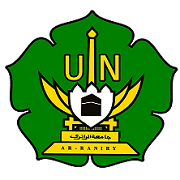PENGARUH PENGGUNAAN HANDPHONE TERHADAP INTERAKSI SOSIAL REMAJA DI DESA DAYAH MEUNARA KECAMATAN KUTAMAKMUR KABUPATEN ACEH UTARA
Abstract
This study entitled the influence of the use of mobile phones on the social interaction of adolescents in Dayah Meunara Village, Kutamakmur District, North Aceh Regency. Mobile is one of the elegant devices that can help make it easier for humans to interact through long distances though. However, the presence of this mobile phone should not be a cause of changes in social interaction for teenagers. The purpose of this study was to determine the effect of using mobile phones on the social interaction of adolescents in Dayah Meunara Village, Kutamakmur District, North Aceh Regency and to understand the factors that hindered the pattern of social interaction in the Dayah Meunara Village, Kutamakmur District, North Aceh Regency. This study uses a qualitative method, where the researcher thoroughly examines the facts found in the research location in accordance with the focus of the problem, by examining directly, then the results of the analysis data are presented and given discussion. To get accurate and reliable data, the data collection technique is done through observation, interviews and documentation. The results of the study explained that mobile phones can influence the social interaction of adolescents in Dayah Meunara Village, both positive and negative influences. Positive influences include making it easy to communicate even when far away. While the negative influences include being able to make teenagers experience dysfunction, when face-to-face interaction decreases immediately, the presence of mobile phones interferes with the quality of direct interactions, mobile phones make hyperpersonal teenagers, mobile phones make consumers consumptive and mobile phones make teenagers less sensitive to the environment. The inhibiting factors for the pattern of social interaction among adolescents in Dayah Meunara Village are family, community, religious, customs and habits. These factors can make social change in adolescents in particular and society in general.
Keywords: Mobile, Social Interaction
Full Text:
PDFReferences
A. Mohd. Osman, dkk., A Study of the Trend of Smartphone and its Usage Behavior in Malaysia, International Journal on New Computer Architecturea and Their Applications, 2012, 2 (1).
Abdul Kadir dan Triwahyuni Terra, Pengenalan Teknologi Informasi, Yogyakarta: Andi Yogyakarta, 2003.
Amin Widada Lestariya, Studi Perbandingan Smartphone-GPS terhadap Beberapa Tipe GPS Receiver, Jurnal Ilmiah Geomatika, 2008. 14 (2).
Doc Morey, Phone Power: Meningkatkan Keefektifan Berkomunikasi di Telepon, Jakarta: PT. Gramedia, 20004.
Elizabeth B. Hurlock, Psikologis Perkembangan: Suatu Pendekatan Sepanjang Rentang Kehidupan, Edisi Kelima, Jakarta: Erlangga, 1980.
Gouzali Saydam, Teknologi Telekomunikasi: Perkembangan dan Aplikasi, Bandung: Alfabeta, 2005.
Morissan, Andy Corry Wardhani & Farid Hamid, Teori Komunikasi Massa, Bogor: Ghalia Indonesia, 2010.
Pei Zheng, Lionel M. Ni. 2006, Smart Phone and Next Generation Mobile Computing II. http://www.sciencedirect.com/science/book/9780120 885602.
Rayyan Ahmad Badwilan, Rahasia di Balik Handphone, Jakarta: Darul Falah, 2004.
Saifuddin Azwar, Sikap Manusia, Teori dan Pengukurannya, Edisi Kedua, Yogyakarta: Pusat Pelajar, 2003.
Soekanto Soerjono, Sosiologi suatu Pengantar, Jakarta: Raja Grafindo, 2002.
DOI: http://dx.doi.org/10.22373/al-ijtimaiyyah.v4i2.4204
Refbacks
- There are currently no refbacks.
Copyright (c) 2018 Muchlis Aziz, Nurainiah

This work is licensed under a Creative Commons Attribution-ShareAlike 4.0 International License.
Jurnal Al-Ijtimaiyyah has been indexed by:



















